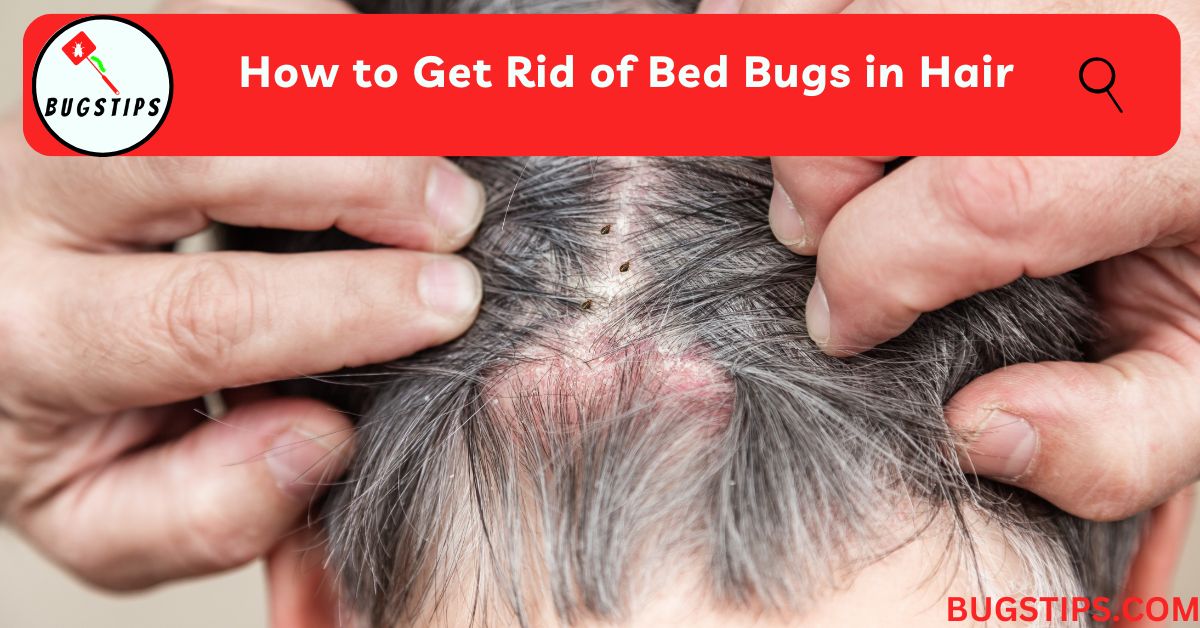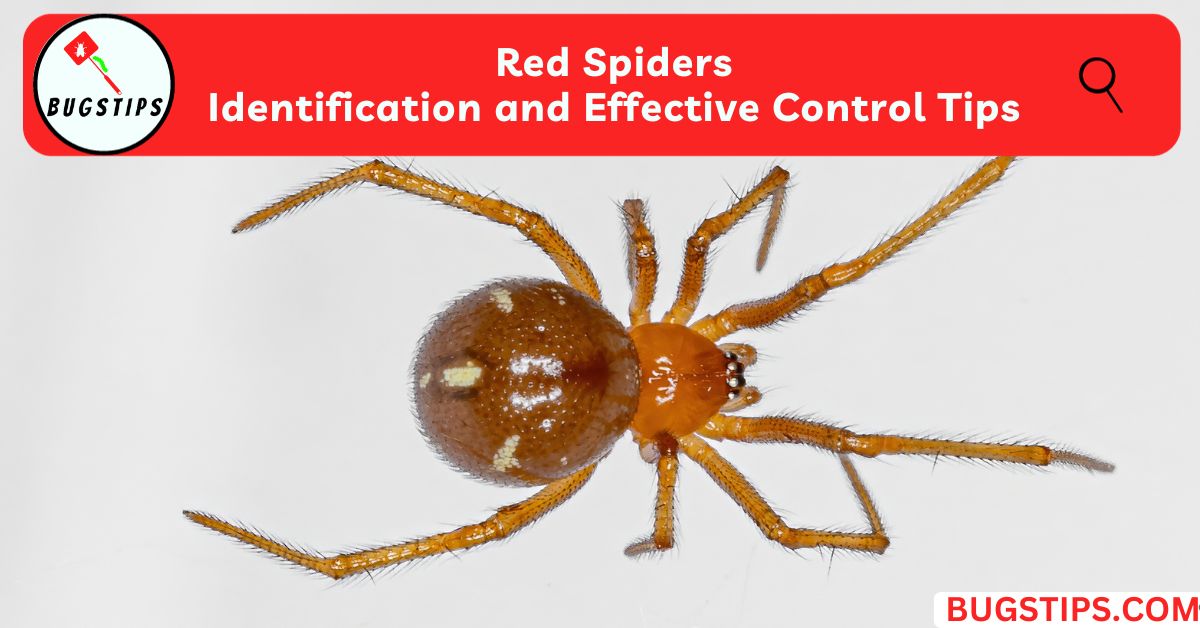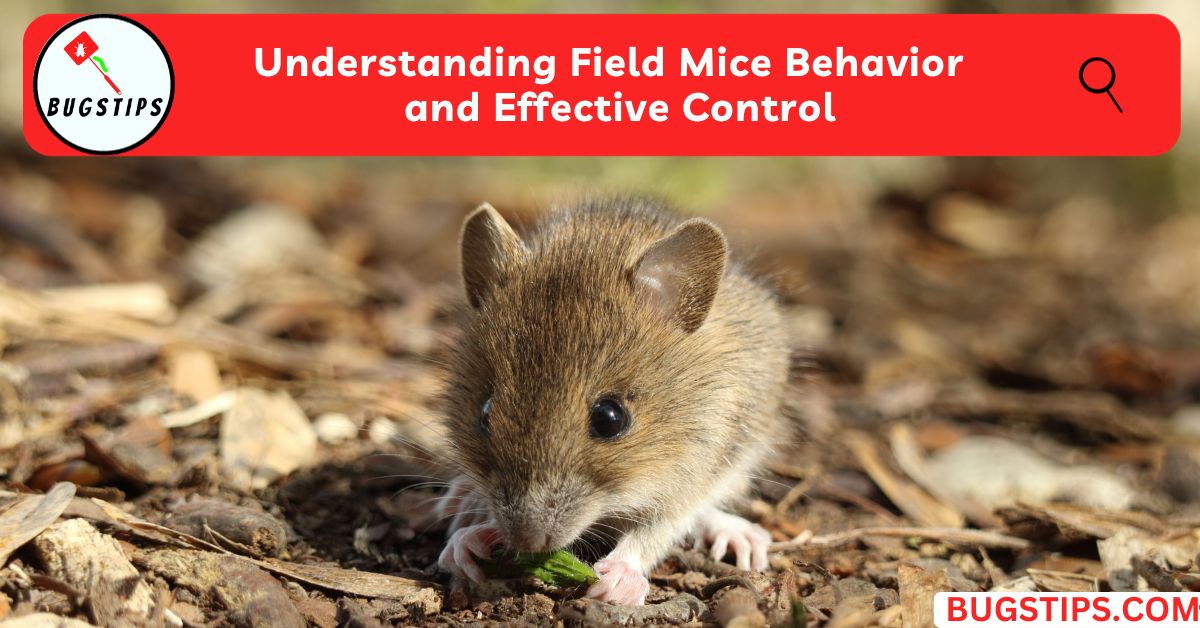This post may contain affiliate links which means as an Amazon Associate, this site may earn a small commission on qualified purchases made through links at no extra cost to you. Learn more on Affiliate Disclosure
Snails may seem like harmless, shy creatures, but they have their fair share of predators. Many animals find snails to be tasty treats and go hunting for these slimy gastropods.
We’ll cover which animals are likely to eat snails in your garden, in ponds and rivers, and during the winter months when food becomes scarce. Snails have to watch out for predators on land, in water, and in the air!
You may be surprised by the variety of animals that eat snails. Birds, mammals, amphibians, reptiles, fish, and even other invertebrates will snack on a juicy snail when given the chance.
By learning about what eats snails, you’ll have a better understanding of natural pest control and the food chain dynamics at play in your own backyard.
Read on to find out who the snails’ worst enemies are!
What Eats Snails in the Garden
A snail’s paradise can also be a snail’s doom when these slimy creatures have to watch out for predators lurking right in their backyard habitat. Several amphibians, reptiles, mammals, and bugs will snack on snails in your garden.
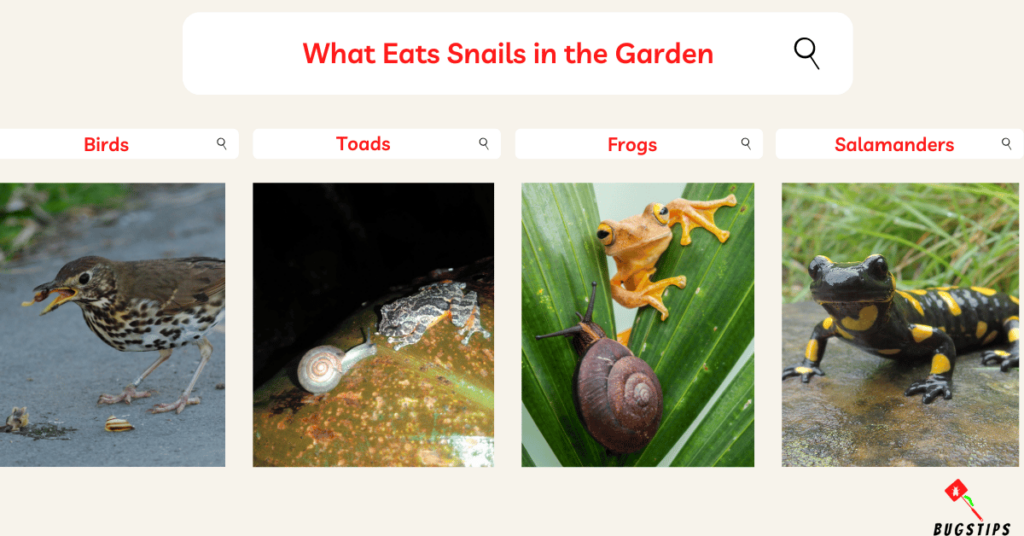
Birds
- You may see birds eating snails in your own garden.
- Many bird species like thrushes, crows, jays, magpies, and blackbirds enjoy snacking on these nutritious gastropods.
- They’ll smash the shells against rocks or swallow the snails whole.
- Thrush species are particularly adept at cracking snail shells open on “anvils” to get to the meat.
- It’s impressive to watch a clever thrush carry a snail to a rock and crack it open with precision to access the escargot within.
Toads
- Toads are voracious snail eaters who will wait patiently for a snail to crawl by and then snatch it with their sticky tongues.
- They consume snails whole.
- With their toxic skin secretions, toads are able to hunt snails with impunity, knowing that most predators won’t dare try to eat them.
- They’ll sit motionless, blending into the environment, just waiting to strike when a juicy snail gets within tongue-shooting range.
Frogs
- Like toads, frogs relish the opportunity to swallow a nutritious snail whole.
- Their powerful hind legs allow them to pounce on unsuspecting snails.
- A frog will spot a snail slithering through the garden and stealthily move into position.
- When ready, the frog rockets forward with its muscular legs, shooting its sticky tongue out to snare the hapless snail before it can react.
- The snail is sucked into the frog’s mouth and swallowed alive.
Salamanders
- Salamanders are skilled hunters who sneak up on snails in damp, hidden garden spots.
- They grab snails with their jaws and swallow them whole.
- Using their slender bodies, salamanders stealthily slither amongst the garden vegetation until they spot their shelled prey.
- Salamanders grab snails in their jaws before tilting their heads back and swallowing the snails whole.
- They particularly like hunting snails in wet environments.

Chameleons
- With their color-changing camouflage, chameleons are masters of blending into the garden environment.
- A snail doesn’t stand a chance when a hungry chameleon is on the hunt.
- Chameleons will sit motionless on branches or leaves, expertly changing color to match their surroundings while watching for snail movement.
- When a snail crawls into striking distance, the chameleon uses its projectile tongue to snatch up the hapless mollusk.
Beetles
- Ground beetles and rove beetles will use their mandibles to bite into snails’ soft bodies.
- These voracious predators hunt snails on the ground and vegetation.
- With their armored bodies, beetles fearlessly approach snails before using their powerful jaws to crush through the shell and into the soft flesh within.
- Some species like bombardier beetles will first spray a noxious chemical spray to paralyze the snail.
Related Article – What Eats Gophers?
Shrews
- These tiny insectivores have fast metabolisms and are always on the lookout for their next meal.
- An opportunistic shrew will scour the garden for snails and other prey to keep its high-energy body fueled.
- Shrews use their long noses to sniff out hidden snails and then bite into the shell with their sharp teeth to access the nutrient-rich body.
Mice
- Mice will come out at night to crunch through a snail’s shell with their sharp teeth and slurp up the soft body.
- Drawn by the snail’s slime trail, mice use their excellent sense of smell to track down shelled prey after dark.
- They’ll skillfully chew through the shell to extract the soft flesh within.

Box Turtles
- Slow and steady wins the race when a box turtle sneaks up on an unsuspecting snail.
- They’ll crunch the shell in their strong jaws.
- Box turtles may seem docile, but they are competent hunters, able to capture and crush snails with their powerful beaks.
- They’ll stealthily stalk snails crossing open ground and then quickly strike before the snail can retract into its shell.
Opossums
- With 50 sharp teeth, an opossum can easily chew through a snail’s shell to get to the meaty body.
- They often hunt for snails at night. As nocturnal foragers, opossums patrol gardens after dark looking for tasty snails and other prey.
- An opossum will pick up snails in its grasp and then start chomping through the shell with its many teeth until it can access the flesh.
Hedgehogs
- Hedgehogs crunch snails between their jaws before tossing them back to swallow whole.
- Their spiny protection deters would-be snail thieves.
- Hedgehogs will find slow snails while rooting around garden beds.
- After crushing the shell, they’ll gobble down their prey and continue foraging, safe from predators thanks to their sharp quills.
Squirrels
- Quick and nimble, squirrels will snatch a slow-moving snail in their jaws and scamper off for a crunchy, shelled snack.
- Constantly on the move, squirrels spot snails while patrolling their wide territories.
- They quickly swoop in, grab the snail in their mouth, and carry it off to their nests.
Related Article – Do Squirrels Eat Insects?
What Eats Snails in Freshwater
Snails can’t hide their soft bodies beneath their swirling shells when underwater predators come calling.
Many fish, amphibians, and invertebrates that share freshwater ecosystems with snails will make these mollusks part of their diets.
Even creatures you add to your aquarium might start snacking on your pet snails.
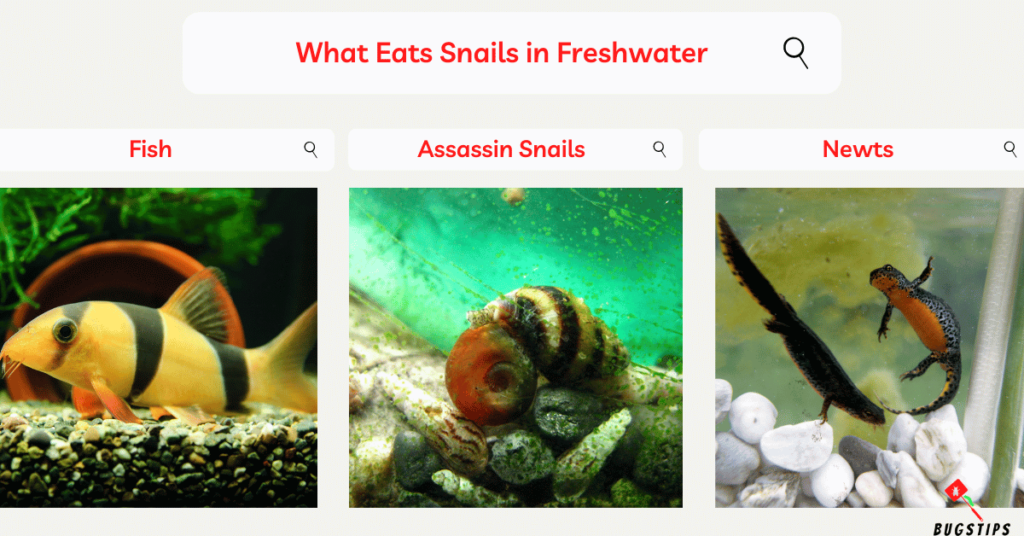
Fish
- Several fish species seek out snails as a tasty source of protein and calcium, including loaches, pufferfish, and catfish.
- Loaches like clown, yoyo, and zebra are especially fond of snails and use their slender bodies to suck the snail right out of its shell.
- Pufferfish will crunch down on the shell with their beak-like jaws, while catfish like the striped Raphael can swallow smaller snails whole.
Assassin Snails
- Ironically, assassin snails prey on other snail species.
- Living up to their name, these aggressive hunters trail after and eat other snails using their tooth-like radula to drill into the shell.
- Assassin snails can wipe out whole snail populations in home aquariums when introduced.
Related Article – 9 Types of Swimming Pool Bugs
Newts
- Stream-dwelling newts hunt for slow-moving snails to eat.
- With their pointy heads, newts can easily poke right into a snail’s shell opening to grab the flesh inside.
- They’ll shake the snail violently to rip it free from the shell and then swallow their shelled snack.
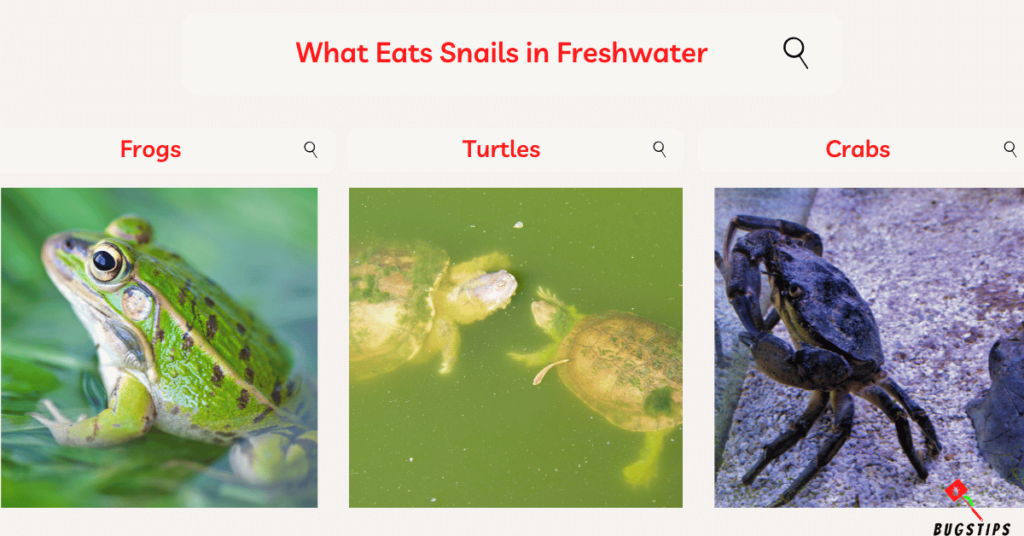
Frogs
- While frogs hunt for snails on land too, they have some different techniques for catching snails in the water.
- Using their webbed feet, frogs can swiftly swim through ponds and rivers in pursuit of slow-moving snails.
- With streamlined hydrodynamic bodies, aquatic frogs can snatch floating snails or pluck them right off underwater vegetation before gobbling them down.
Turtles
- Turtles use their sharp beaks to crush through snail shells whether on land or in water.
- But aquatic turtles have the advantage of stealth when swimming slowly through water to sneak up on snails.
Crabs
- Crustaceans like crabs that live in freshwater will use their pincers to break through snail shells.
- Smaller snails are crushed and consumed whole, while crabs will extract the body from bigger shells.
You May Also Like – Do Ticks Die in the Winter?
What Eats Snails in the Winter
When cold weather strikes, snails become more vulnerable as they hibernate or move slowly in lower temperatures. But a few hardy predators will still seek out these dormant gastropods to make a winter meal.
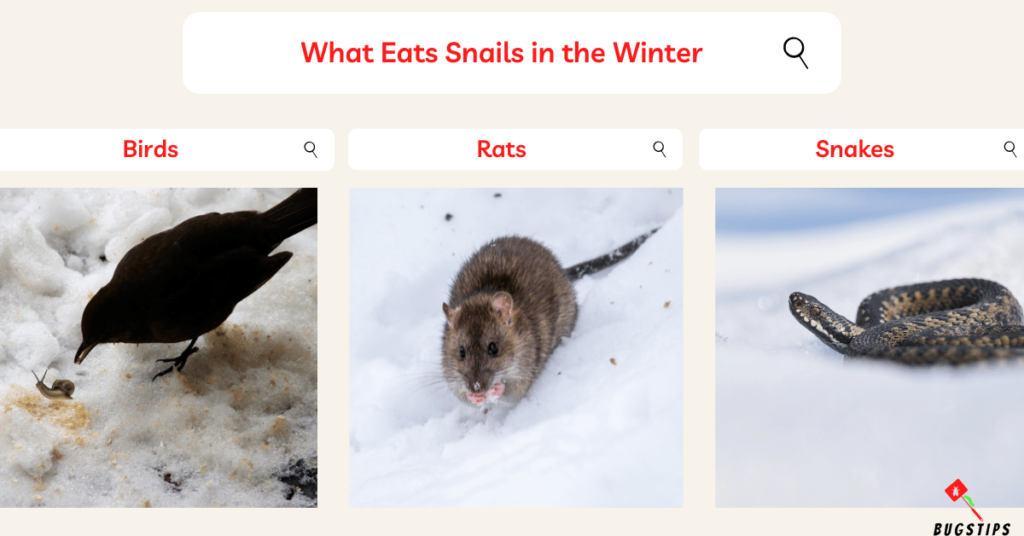
Birds
- Birds like crows, blackbirds, and wild turkeys remain active through winter.
- Their higher metabolisms require lots of food, even when prey is scarce.
- These clever birds use their beaks to crack open sluggish snails’ shells and access the meat inside.
Rats
- As resourceful scavengers, rats don’t hibernate in winter.
- They’ll search under logs, rocks, and leaves for slumbering snails.
- Rats will then use their sharp teeth to chew through the shells to eat these snails.
Snakes
- Snakes that don’t hibernate are on the hunt through winter, even relying more on their senses of smell and touch to find food when it’s harder to spot.
- Sluggish snails make easy cold-weather meals for snakes, which swallow them whole and crush the shells in their muscular throats.
Related Article – Can Snakes Bite in Water?
Do Snails Eat Other Snails?
Snails are known for munching leisurely on plant material, but some species will actually hunt and consume other snails as prey. However, not all snail species have a taste for their own kind.
Certain carnivorous snail varieties like the aptly named assassin snail will readily feed on other snails if given the chance. Using their tooth-like radula, these predators drill into the shells of live snails to extract and eat the soft body within.
Other snails, such as leopard slugs, use toxins in their saliva to immobilize escargot prey before eating them. And they also love to eat snail eggs.
Some omnivorous species will eat both plant matter and scavenge on dead snail shells for calcium but do not actively hunt other live snails.
So while snail-on-snail predation does occur in some species, many types of snails appear to prefer vegetarian diets.
Unless you have a voracious carnivorous type, your garden snails likely have little interest in cannibalism.
Related Article – 22 Bugs with Hard Shells
Can Dogs Eat Snails or Slugs?
Dogs are infamous for eating just about anything they can get their paws on outside. So you may have seen your pooch munching on a snail or slug picked up in the garden.
In most cases, snails and slugs won’t harm dogs if ingested in small amounts. However, there are some health risks associated with dogs eating these invertebrates.
Snails and slugs can potentially transmit bacteria and parasites, such as lungworm, that may make your dog sick.
The slime they produce can also cause stomach upset. And snail or slug bait pesticides are highly toxic to dogs.
For safety, try to keep your dog from eating these crawly critters. Monitor your yard for snails and slugs and use pet-safe methods to deter them. Also, speak with your vet about checking for lungworm infection if your dog has eaten slugs or snails.
You May Also Like – 13 Bugs That Look Like Black Sesame Seeds
Final Thoughts
As we’ve seen, snails have to watch out for a whole host of predators both on land and in water.
Birds, mammals, amphibians, fish, and even other invertebrates consider escargot to be a tasty treat. For many animals, snails provide a convenient source of protein, fat, and calcium to fuel their active lifestyles.
While we often think of snails as harmless garden pests, they play an important role in the ecosystem as prey for diverse predator species.
But not all snail-eating animals are welcome in your yard. Protect valued plants from snail damage using deterrents that won’t harm beneficial predator populations.
Pay attention and you might witness clever snail-hunting behaviors firsthand as birds smash shells or frogs snap up unsuspecting prey. Just peek into a pond to see fish nibbling on captive snails.
A snail’s life is not easy with so many creatures depending on them for survival!
FAQs
What eats snails in the shell?
Many predators like birds, turtles, rats, and beetles have specialized techniques for cracking open snail shells in order to eat the soft bodies inside.
Their beaks, teeth, and mandibles allow them to access the snail meat through the shell.
Do rabbits eat snails?
Rabbits are herbivores that do not typically eat snails or other animals.
However, wild rabbits may occasionally snack on snail shells as a source of calcium and minerals. But they avoid the meat inside.
Do cats eat snails?
As carnivores, cats will sometimes eat snails if they happen across them outdoors. Cats can use their teeth to crush the shells and consume snails whole.
What eats snails in a pond?
In freshwater ponds, predators like fish, frogs, turtles, and birds eat snails. Herons also spear snails in shallow water with their sharp beaks.
Resources – (for further reading)
Carnegie Museum of Natural History – Snail Predators – Mollusks
Royal Horticultural Society – Snails / RHS Gardening


